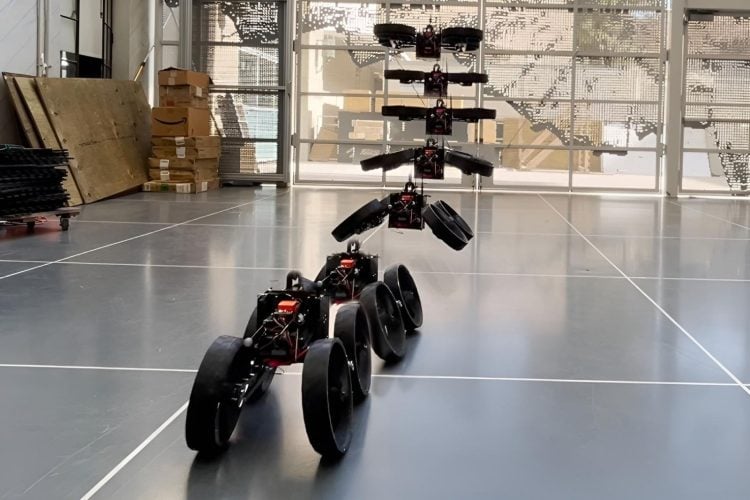Engineers at the California Institute of Technology (Caltech) have developed a transformer-like drone that can easily switch from aerial to ground driving mode in midair.
Dubbed ATMO (aerially transforming morphobot), the innovative drone developed by Mory Gharib and Ioannis Mandralis of Caltech is capable of something that the aerospace industry has been struggling to deal with for probably more than 50 years – midair transformation. Using a single motor to move a central joint that alters the orientation of its four thrusters, ATMO can seamlessly transition from a flying drone to a Rover-like vehicle before it touches the ground. This midair transformation is critical because rough and unpredictable terrain can cause the transformation system to malfunction. Interestingly, the round shrouds that protect the drone’s four thrusters also act as wheels when the gadget is in drive mode.

Photo: Ioannis Mandralis/Communications Engineering
“We designed and built a new robotic system that is inspired by nature—by the way that animals can use their bodies in different ways to achieve different types of locomotion,” says Ioannis Mandralis (MS ’22), a graduate student in aerospace at Caltech. “Having the ability to transform in the air unlocks a lot of possibilities for improved autonomy and robustness.”
Although the midair transformation relies on a single motor to move a central joint that lifts and lowers the ATMO’s thrusters in flying or driving position, the process is a lot more challenging than it looks. The engineers had to account for complex aerodynamic forces when testing the system, as well as the turbulence and instability of the four thrusters altering their position during the landing process. They also conducted smoke visualization experiments to discover the phenomena that caused these changes in dynamics. Finally, they fed all this data to an algorithm created especially for controlling the ATMO.
“The control algorithm is the biggest innovation in this paper,” Mandralis told Communications Engineering. “Quadrotors use particular controllers because of how their thrusters are placed and how they fly. Here we introduce a dynamic system that hasn’t been studied before. As soon as the robot starts morphing, you get different dynamic couplings—different forces interacting with one another. And the control system has to be able to respond quickly to all of that.”
The ATMO drone is still in its prototype stage, but its midair transformation capability is considered a breakthrough that could revolutionize air travel.


0 Comments